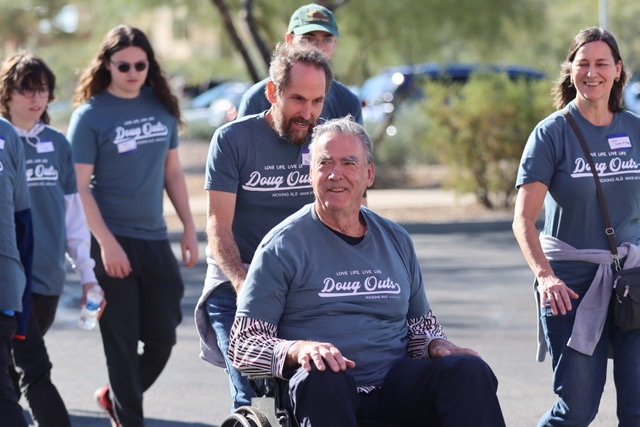Home modifications cost tens of thousands of dollars. A specialized wheelchair costs $50,000. Medications can be over $100,000 annually. These expenses are just the tip of the iceberg when it comes to ALS.
“It’s expensive, but it’s necessary,” said Karen Clough, wife of Doug Clough, who has ALS.
Amyotrophic lateral sclerosis (ALS), more commonly known as Lou Gehrig’s disease, is a progressive and fatal neuromuscular disease that causes loss of voluntary muscle control, which includes moving, eating, speaking, and breathing.
It’s also an incredibly expensive disease.
READ ALSO: Ranking Arizona: Top 10 hospitals for 2022
READ ALSO: Ranking Arizona: Top 10 best places to live for 2022
“The big expenses honestly were equipment,” said Maren Showkeir, whose husband died from ALS. “[Jamie] had a cough assist machine, he had a CPAP machine to help him breathe eventually, and he had to have a specialized hospital bed.”
Expenses for treating ALS accumulate over the course of the disease. The average cost for a patient can be $150,000 to $200,000 per year with costs increasing in later stages of the disease, according to a study done in 2015.
Medications carry a hefty price tag with the most expensive drug, Radicava, priced at $171,000 annually. The longest-standing medication, Riluzole, is the cheapest at $30 to $500 per month, depending on the brand, pharmacy, and insurance. Relyvrio, which was recently approved by the Food and Drug Administration (FDA), is predicted to cost $158,000 annually, even with questions surrounding its effectiveness.
“Even if you’re making six figures a year, that’s a big chunk of change for anybody,” Karen Clough said. “That’s a big chunk for something that might work.”
Insurance plays a big part in the affordability of treatments. Doug Clough, who has had ALS for eight years, said he is limited to treatments covered by insurance.
“I have to make sure [treatments] are covered by [insurance]… If it’s not there, I don’t do it,” he said.
Even with insurance, it can be a battle to have treatments covered.
“Eventually [treatments] were covered by insurance and then Medicare… and both of them were a bureaucratic nightmare. We had really good insurance and we had to fight for everything,” said Showkeir.
Sometimes, a patient can’t even see a doctor because of how expensive a visit can be.
“I canceled my clinic visit for Monday because I can’t afford the copay right now,” Doug Clough said. “That’s frustrating because I should be able to go to the doctor, but decisions have to be made and I can do without that.”
Both Showkeir and the Cloughs said they wouldn’t have been able to afford their treatments without the support from the community.
“We had an amazing community that supported us,” said Showkeir. “They started a GoFundMe for us and if we hadn’t had that money, it would’ve just wiped out our retirement… I would’ve been left with very little when he died.”
Along similar lines, Doug Clough said, “We’ve been very fortunate with that; [we’ve] literally been given thousands upon thousands of dollars of equipment, and we have a friend who’s given us $10,000 every once in a while, and without that, we wouldn’t be able to do a lot of things.”
While finances are a struggle, Doug Clough emphasized those with ALS can still live life to the fullest.
“I want people to understand just because you got ALS doesn’t mean you can’t enjoy life; it [just] may change a little bit,” he said.




